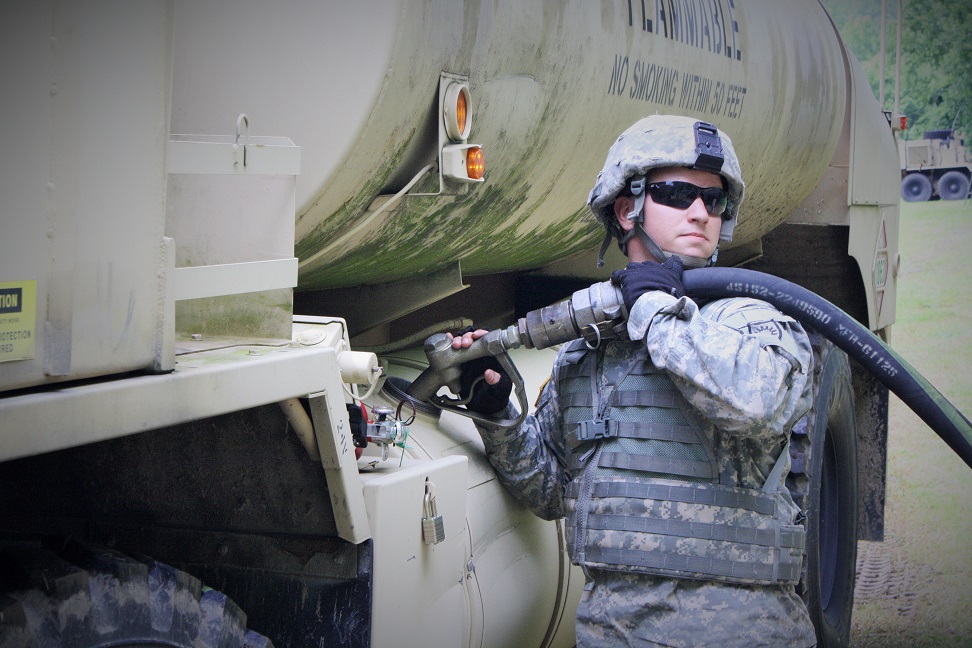This post is also available in:
 עברית (Hebrew)
עברית (Hebrew)
Powering remote military structures and installations in hostile areas far away from reliable diesel fuel convoys is a critical capability and one that is drawing significant funding and innovation.
The reliance on diesel to power generators at remote military forward operating bases (FOBs) proved an immense challenge for US forces operating in Afghanistan throughout the last decade. The vehicle convoys needed to deliver the diesel to the FOBs quickly became a favored target for improvised explosive device (IED) attacks, putting the lives of men and women traveling through these hazardous environments at risk.
In March 2016, researchers from the US Air Force Research Laboratory teamed up with the University of Dayton Research Institute (UDRI) and launched a year-long program to demonstrate new energy technologies designed to significantly reduce the amount of diesel fuel needed to power remote military installations.
The program will use energy-efficient insulation and lighting, improved heating, ventilation and air conditioning systems and smart controllers, advanced batteries for energy storage and delivery, solar cells and other technologies to generate and manage cleaner energy while reducing energy demand and environmental impact.
In an interview to army-technology.com, lithium battery manufacturer EnerDel tell about their part in the team developing innovative power conversion technologies to create a hybrid solar battery and storage system for the US Air Force.
EnerDel became involved in the project when the mobile hybrid power system (MHPS) it was developing attracted the interest of the team.
The company has been involved in grid energy storage and hybrid power systems since 2010. It demonstrated in 2013 a 10kW split phase MHPS with 40kWh of energy storage, a 10kW diesel generator, and a 10kW inverter all mounted on a military style trailer.
“This unit was primarily used to demonstrate fuel savings by running the generator at its optimum fuel consumed to power produced level anytime the generator was on,” says Tod Becherer, sales manager for grid and energy storage at EnerDel. “The energy consumed from the load was subtracted from the energy produced with the excess energy directed into the energy storage system (ESS); once the ESS was topped off, the generator would be turned off and the loads supported with power being drawn from the ESS.”
The success of this demonstration led to a contract from the US Army Corps of Engineers. EnerDel is continuing development efforts to further ruggedize its MHPS and produce solid state controllers. These targets are being pursued in order to reduce weight, costs, parasitic system energy losses and to make the system more flexible in the fit, form and function of the application – all vital requirements that will help change the way military and industry views power production alternatives.
“Hybrid power production as a micro-grid solution eliminates the need for long transmission lines, centralized grids and controls that carry power across thousands of miles, and a distributed or micro-grid could be used to provide cost-effective power in a wide variety of applications,” says Becherer.
This potentially includes civilian and paramilitary applications, with the same or less militarized versions used by state or local disaster relief agencies for small to medium sized mobile power stations for hurricane, flooding or other disaster relief situations. Similarly, in remote areas, these systems could be scaled to become fuel efficient micro-grids.
“The demand for distributed energy storage systems over the next five to ten years is expected to grow rapidly as utilities and industrial players install renewable generation and energy storage across the globe,” says Becherer. “Today, the cost remains high, but we are already seeing dramatic reductions in other industries as demand increases, and the cost of solar equipment has plummeted over the past two decades.
“The main hurdles are producing a robust product with remote monitoring from a central point to anticipate maintenance issues or dispatch more fuel, changing the paradigm of the power consumer and industry, and gaining product awareness with the opportunity to prove performance and reliability as a viable alternative to the present emergency and conventional power systems.”


























